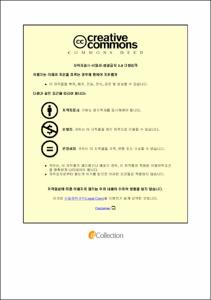한국인 유래 신장암으로부터의 pazopanib 내성 세포주 수립 및 교차내성 연구
- Abstract
- Resistance to anticancer drugs is one of the main causes of the failure of primary chemotherapy. Following the failure of primary chemotherapy, considering resistance to select secondary anticancer drugs is deemed very essential. In recent five years, about 770,000 studies on drug resistance have been published. Among them, about 6,500 (0.84%) studies using the resistant cell lines. About 670 studies of in vitro cross-resistance using resistant cell lines were published. There are about 2000 studies using the half maximal inhibitory concentration (IC50) in the resistant cell line, and only one study using the drug-induced growth rate inhibition (GR100). Several clinical research studies on cross-resistance have been published, but in vitro cross-resistance studies using resistant cell lines and the growth inhibition (GI) are insufficient. GR100 is more meaningful than IC50 because it mimics the clinical environment and reflects the initial state of the tumor. We established resistant cell line using SNU-349 cells and pazopanib, the most commonly used as a primary chemotherapy. We described in detail how to establish resistant cell line and evaluate. Calculating the number of cells needed for the experiment, calculating the concentration of drugs appropriate for establishing resistance, evaluating the reversibility of resistant cells, and evaluating resistant cell line using growth rate to have clinical significance were described. Pazopanib, a tyrosine kinase inhibitor (TKI) targeting platelet-derived growth factor receptor (PDGFR) α/β, and vascular endothelial growth factor receptor (VEGFR) family was used. Cross-resistance was assessed on four other TKIs (axitinib, cabozantinib, sorafenib, sunitinib) and two mammalian target of rapamycin (mTOR) inhibitors (everolimus, temsirolimus) using the drug-induced growth rate inhibition (GR) value and growth rate alteration that can represent the clinical situation, as with pazopanib. Our data show that cross-resistance exists between TKI groups for pazopanib-resistant cell lines, and there is no cross-resistance for mTOR inhibitors. The results of this study are expected to be used as basic data that can be referred to when selecting drugs in clinical practice. |항암제에 대한 내성은 1차 화학요법의 실패의 주된 원인이다. 신장세포암의 1차 화학요법이 실패하는 경우 차선으로 사용할 수 있는 2차 항암제의 선택은 암 치료 분야에서 매우 중요한 주제이다. 최근 5년간 약물 내성에 대한 연구는 약 77만 건이 발표되었으나, 이 중 내성 세포주를 이용한 연구는 약 6천 500건으로 0.84%에 불과하다. 내성 세포주를 이용한 연구 중 교차 내성을 연구한 논문은 약 670건이 발표되었다. 내성 세포주 연구에서 반수 최대 억제 농도 (IC50)를 사용한 연구는 약 2천 건, 약인성 성장 억제율 (GR100)을 이용한 연구는 1건이다. 교차 내성에 대한 여러 임상 연구가 발표되었지만 세포주를 이용한 기초 연구 모델에서 내성 세포주를 이용하고 성장 억제를 반영한 항암제 교차 내성 연구가 부족하다. GR100은 종양의 초기 상태를 반영하기 때문에 암 치료에 대해 IC50보다 의미가 크다. 본 연구에서는 clear cell type의 한국인 유래 신장암 세포주인 SNU-349를 이용하여 1차 항암제로 가장 많이 사용되는 파조파닙에 대한 내성 세포주를 제작하였고, 세포주에 내성을 확립하는 방식이 유의미하였음을 확인하였다. 실험에 필요한 세포 수 계산부터 내성 수립과 내성 세포의 가역성 확인에 적합한 약물의 농도 계산까지 자세히 설명하고 성장률을 평가하여 in vitro 연구에서도 임상적 의미를 제시할 수 있음을 시사하였다. 파조파닙은 혈소판 유래 성장인자 수용체 알파/베타 (PDGFR α/β)및 혈관 내피 세포 성장인자 수용체 (VEGFR)를 타겟으로 하는 타이로신 키나아제 저해제 (TKI)이다. 파조파닙 내성 세포주를 수립하여 2차 항암제로 고려되는 4종의 TKI (악시티닙, 카보잔타닙, 소라페닙, 수니티닙)와 2종의 포유류 라파마이신 표적 단백질 (mTOR) 억제제 (에버로리무스, 템시로리무스)의 교차 내성을 평가하였다. 실험실 환경에서 임상 환경을 반영할 수 있도록, 세포가 자라지 못하도록 하는 농도를 나타내는 GR100과 세포 성장률 변화를 분석한 결과 파조파닙 내성에 대한 TKI 계열 약물들의 GR100 비율은 1.67에서 1.37의 범위에서 교차 내성이 발생하며, mTOR 억제제들의 GR100 비율은 0.99-1.05로 교차 내성은 발생하지 않는 것을 확인할 수 있었다. 본 연구결과는 임상에서 파조파닙의 치료 실패 후 차선으로 사용할 수 있는 항암제를 선택할 때 과학적 근거를 제시해 주는 기초자료로 활용될 수 있을 것이다.
- Issued Date
- 2022
- Awarded Date
- 2022-08
- Type
- dissertation
- Alternative Author(s)
- SO MYOUNG KIM
- Affiliation
- 울산대학교
- Department
- 일반대학원 의과학과 의과학전공
- Advisor
- 김영훈
- Degree
- Master
- Publisher
- 울산대학교 일반대학원 의과학과 의과학전공
- Language
- eng
- Rights
- 울산대학교 논문은 저작권에 의해 보호 받습니다.
- Appears in Collections:
- Medical Science > 1. Theses (Master)
- 파일 목록
-
-
Download
 200000633018.pdf
기타 데이터 / 2.26 MB / Adobe PDF
200000633018.pdf
기타 데이터 / 2.26 MB / Adobe PDF
-
Items in Repository are protected by copyright, with all rights reserved, unless otherwise indicated.